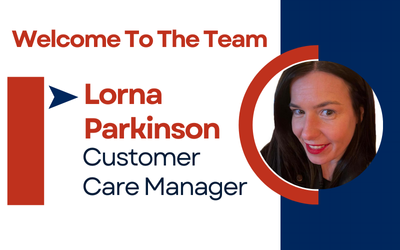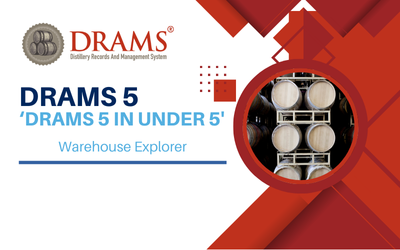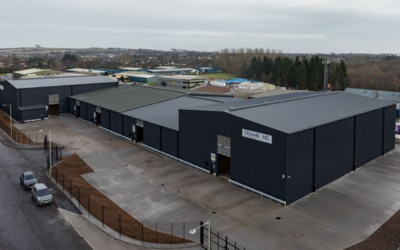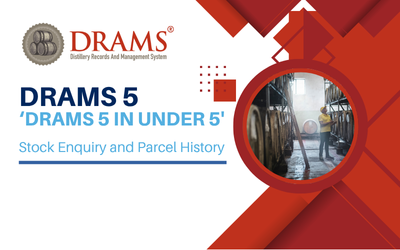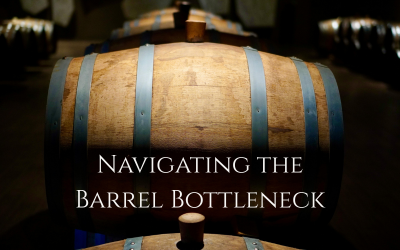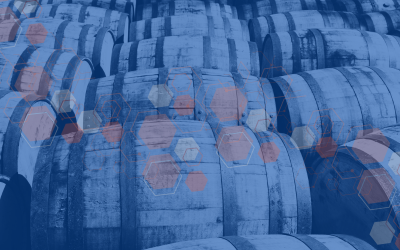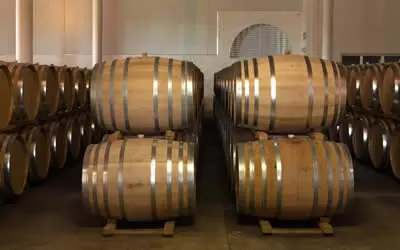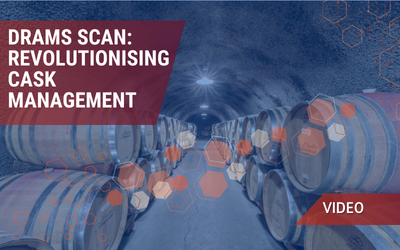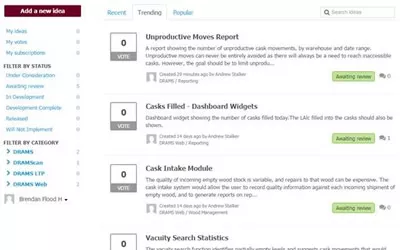Over the past decade the Bourbon industry has experienced a significant boom, driven by strong consumer demand and interest in high-quality products. Factors such as the premiumisation of Bourbon, the rise of cocktail culture, and increased tourism have contributed to its popularity. Experts estimate that the recently valued 8.4 billion USD Bourbon market could reach 16.8 billion USD by 2033, making it clear that there’s still plenty of growth to be had.
Planning for Spirit Inventory Growth
While the growth of the industry presents an exciting opportunity for spirit producers, successfully keeping up with demand is not without its challenges. The rising demand for Bourbon presents significant challenges in inventory management. The necessity of the maturation period in whiskey production complicates the planning process, as production decisions made today will not yield results for several years.
In an article published by SevenFifty, Mark Brown, the CEO of Buffalo Trace at the time of publication, explains that before Buffalo Trace put formal forecasting measures in place, the distillery risked a supply crisis because it came close to not having enough mature whiskey in stock. “As demand rose and our buffer stock was depleted, we needed to plan right down to the last barrel, literally,” he says. “We became aware that demand was rising faster than supply—and that we needed to ramp up production to try and catch up.”
Denny Potter, the Master Distiller and General Manager for Maker’s Mark, highlighted in the same article the importance of balancing every aspect of whiskey production: “If you add distillery capacity, we’ll need a place for the barrels. If we have more whiskey to bottle, we’re going to need the finished-good warehouse capacity to distribute it.”
To keep up with this surging demand for Bourbon, many distillers are considering the need for infrastructure expansions, particularly in terms of production and warehousing capabilities. For instance, in recent years, Jim Beam has announced investments exceeding $60 million to increase production capacity, while Buffalo Trace Distillery is in the midst of a $1.2 billion expansion plan aimed at boosting production and storage facilities.
Such substantial investments are being mirrored across the industry by distillers of all sizes, highlighting the industry’s dedication to meeting consumer demand and reflecting the significant growth opportunities within the market. However, committing to such an investment is not without its risks.
Having confidence in the data available to you to accurately assess what impact a change in the sales forecast years down the line will have on today’s production requirements is essential when building a case to justify CAPEX expenditure and minimise the financial risk.
The Importance of Effective Inventory Management & Planning
Maintaining an accurate long-term view of spirit inventory utilisation and planning enables distilleries to align production with future market demands while also providing invaluable insights into many aspects of a distillery operation, including infrastructure expansion needs.
With inventory projections, distilleries can view production and warehousing requirements and recognise when demand exceeds current capabilities. Through detailed inventory management and planning processes, distillers can generate an accurate picture of warehouse capacity utilisation. By considering inventory growth and planned operations, they can pinpoint space shortages and obtain the insights needed to determine exactly when space will become insufficient for maturing spirits. This foresight enables the business to justify financial investments and ensure the precise timing of expenditures, allowing new facilities to come online in sync with the growth in production and warehousing requirements.
In addition to identifying warehouse space shortages, efficient inventory management and planning can generate strategic insights for the business in several other ways:
Optimise Inventory Utilisation: When simply increasing production of a specific spirit type is no-longer an option, a reliable long-term view of spirit inventory allows producers to more effectively plan for its utilisation. With a nuanced view of changing inventory levels, producers can adapt the allocation of the spirit inventory and adjust end-product recipes to capitalise on areas of surplus and compensate for areas of deficit. Optimising the existing inventories potential to meet the forecast demand figures.
Negotiating 3rd party contracts: With a long-term view of how production capacity and inventory utilisation measures against demand insights can be gained into where a contract with a 3rd party producer may need to be secured or renegotiated. Or alternatively, the inisghts gained may indicate areas where capacity exceeds requirements and therefore could be capitalised on as an additional revenue source.
Mitigating External Factors: External factors such as employee shortages, barrel shortages, droughts, or global pandemics can disrupt short-term production plans and spirit inventory. With the insights gained from robust inventory management and planning processes, distilleries are better equipped to quickly identify the implications of these factors on the long-term plan and make the necessary adjustments before they have knock on consequences.
Strategic Marketing Spend: When the inventory management and planning process reveals that forecast demand for a particular product cannot be met, distilleries can use the insights gained to adjust the demand profile by redirecting marketing expenditure towards more sustainable product lines. Additionally, with a reliable view of the inventory profile, spirit producers can use the insights gained to identify opportunities for new product lines, leverage under-utilised inventory items or adjust the age profile of existing products to optimise the potential for revenue generation.
The Challenges of Relying on Excel for Spirit Inventory Management
The strategic insights which can be gained from robust and reliable long-term inventory management and planning processes are invaluable, however extracting these insights from a spirit inventory management solution is not always easy.
Many distilleries default to a process of extracting their current inventory data and manipulating in a complex Excel templates to model their spirit utilisation against forecast demand data. Most spirit producers we encounter talk at length about the intricate spreadsheets they have devised in an attempt to make sense of this complex flow of data.
These documents, which inform the distillery’s future spirit production requirements, warehouse utilisation, operational process planning, inventory utilisation, and final product outputs, typically hold within their many tabs and formulae the key to the business’s future success or failure.
However, Excel is not without its faults. Manual errors, corrupted files, and mistakenly typed formulae can have a significant knock-on effect on business performance. While Excel is a phenomenal solution with extensive capabilities, it is ultimately only as good as the user. Half the challenge is knowing the correct formula to use to achieve the desired results. Additionally, in most cases, there are only a small handful of people in the business who actually know how to make the spreadsheet work and are trusted not to break the file.
Introducing DRAMS Long-Term Planning
The DRAMS Long-Term Planning (LTP) solution was conceived to bring together mature spirit inventory management and long-term spirit supply planning within an integrated software solution. It enables users to quickly understand the current spirit inventories ability to meet forecast demand, providing tools to model inventory utilisation and amended end-product recipes to ensure optimal inventory allocation. Reports derived from the data modelling process provide the insights required to drive strategic decision-making across the business.
The DRAMS Long-Term Planning module relies on three main data inputs: current barrel inventory, sales forecast or final product demand for an identified period, and the blend recipes or spirit components of each final product. These inputs allow the system to generate accurate and actionable insights.
With these inputs, the DRAMS Long-Term Planning module provides a sandbox environment for creating multiple iterations of a projection model without altering core data sets. The solution processes product demand data from the current operational month forward, constrained only by the availability of the demand forecast data.
Revolutionising Inventory Management
Advanced inventory management and planning solutions, such as the DRAMS Long-Term Planning product, are revolutionising the way distilleries manage their spirit inventory and production strategies. By integrating real-time data inventory profiles, and sophisticated data modelling capabilities, this system offers unprecedented visibility and control over the inventory management and planning process.
The DRAMS Long-Term Planning module stands out by providing a comprehensive solution that combines inventory management with long-term supply planning. It facilitates accurate analysis of future inventory needs, warehouse capacity, and production requirements, ensuring that distilleries can meet market demands without overproducing or facing shortages. The module’s ability to create detailed projection models allows distilleries to make informed decisions, optimise their operations, and ultimately maintain a balanced and efficient production pipeline.
In an industry where tradition meets innovation, embracing advanced inventory planning solutions like DRAMS Long-Term Planning can drive operational excellence and sustain long-term growth.
For more information about the DRAMS Long-Term Planning solution and the key benefits it provides, download our brochure here.
Download the DRAMS Long-Term Planning Brochure





